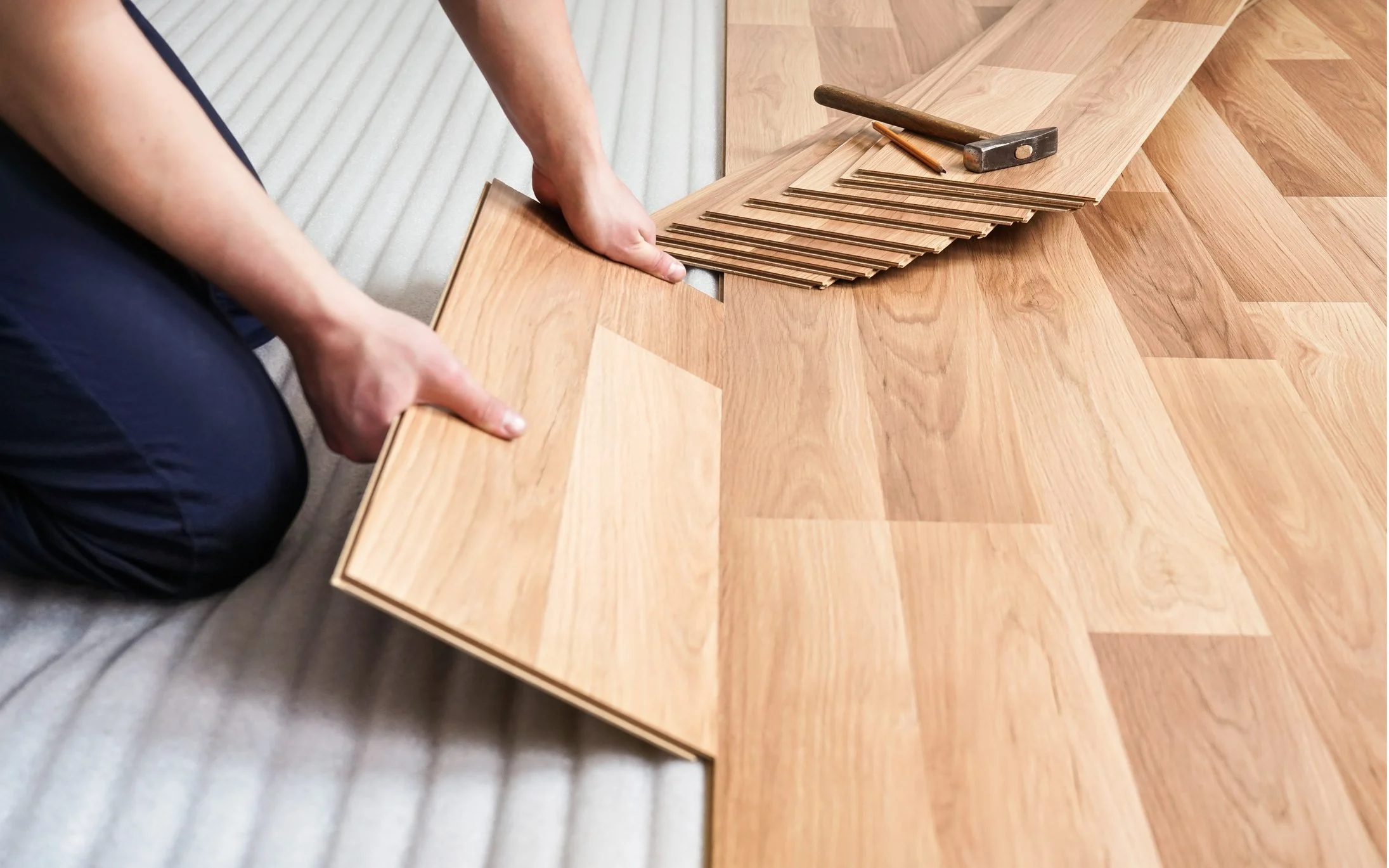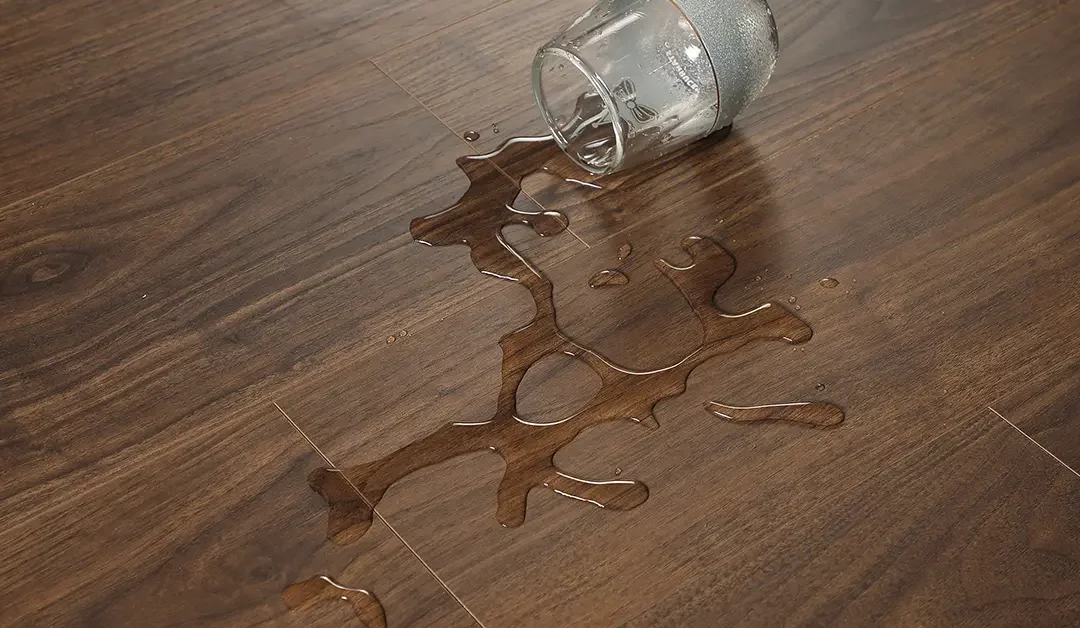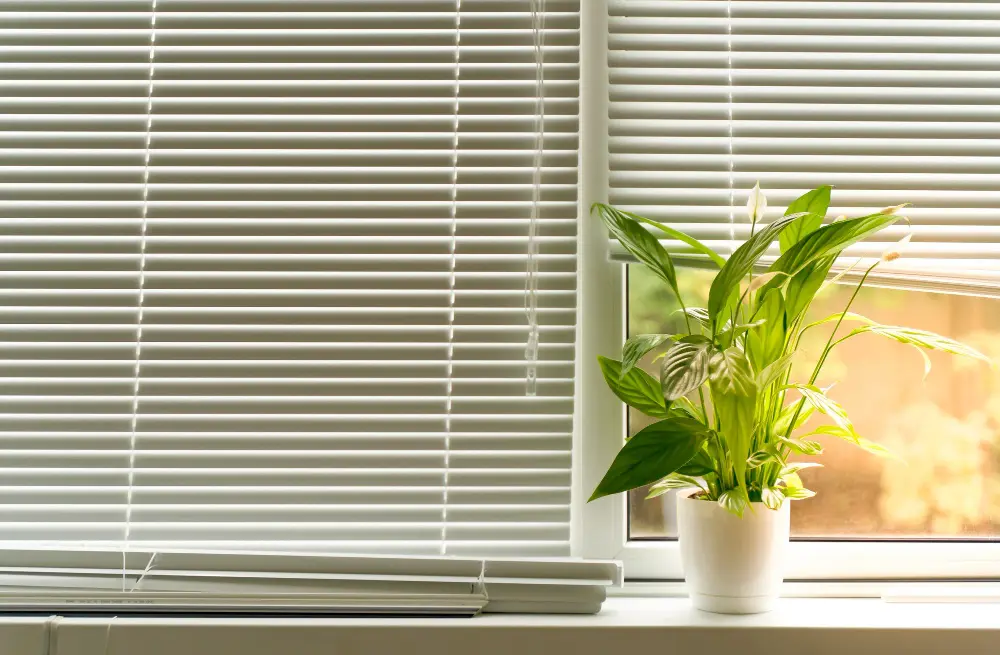Choosing the right flooring for your home involves a thoughtful consideration of various factors, including durability, aesthetics, maintenance, and budget. Vinyl vs. Laminate vs. Linoleum are popular flooring choices, each offering unique features. In this comprehensive guide, we’ll delve into the characteristics, pros, and cons of vinyl, laminate, and linoleum flooring to help you make an informed decision tailored to your specific needs.
Vinyl Flooring: A Modern and Versatile Option
Advantages of Vinyl Flooring:
- Water Resistance:
- Vinyl flooring is highly resistant to water, making it suitable for areas prone to spills or moisture, such as kitchens and bathrooms.
- Diverse Designs and Styles:
- Vinyl flooring offers a vast array of designs, including options that mimic the look of hardwood, tile, and stone. This versatility allows for creative and personalized flooring solutions.
- Durability and Resilience:
- Known for its durability, vinyl flooring can withstand heavy foot traffic and resist scratches and stains.
- Comfort Underfoot:
- Vinyl has a softer and warmer feel underfoot compared to materials like tile, providing enhanced comfort.
- Easy Maintenance:
- Cleaning vinyl flooring is a breeze. Regular sweeping and occasional mopping are usually sufficient to keep it looking pristine.
- Affordability:
- Vinyl flooring is often more budget-friendly than other options, making it an attractive choice for cost-conscious homeowners.
- DIY-Friendly Installation:
- Many vinyl flooring products feature user-friendly installation methods, including click-and-lock or adhesive backing systems.
Disadvantages of Vinyl Flooring:
- Environmental Concerns:
- The production and disposal of vinyl flooring can raise environmental concerns, especially when considering the use of PVC.
- VOC Emissions:
- Some vinyl flooring products may emit volatile organic compounds (VOCs) after installation, contributing to indoor air pollution.
- Susceptible to Fading:
- Extended exposure to sunlight may cause vinyl flooring to fade over time, affecting its appearance.
- Limited Repair Options:
- If a vinyl plank is damaged, the replacement process can be challenging, and achieving a seamless look may be difficult.
Laminate Flooring: The Simulated Elegance of Hardwood
Advantages of Laminate Flooring:
- Affordable Hardwood Alternative:
- Laminate flooring provides the look of hardwood at a more affordable price point, making it an attractive option for budget-conscious homeowners.
- Versatility in Designs:
- Laminate flooring comes in various styles and designs, including wood and stone looks, offering a wide range of aesthetic options.
- Durability:
- Laminate flooring is resistant to scratches, stains, and wear, making it a durable choice for high-traffic areas.
- DIY Installation:
- Many laminate products feature a click-and-lock installation system, making it accessible for DIY enthusiasts.
- Easy Maintenance:
- Laminate flooring is easy to clean and maintain, requiring regular sweeping and occasional damp mopping.
- Stability:
- Laminate flooring is less susceptible to moisture-related issues compared to hardwood, providing more stability in varying environmental conditions.
Disadvantages of Laminate Flooring:
- Not Waterproof:
- While resistant to water, laminate flooring is not entirely waterproof. Prolonged exposure to moisture can lead to damage.
- Limited Repair Options:
- Repairing laminate flooring may involve replacing entire planks, and achieving a seamless look can be challenging.
- Artificial Feel Underfoot:
- Laminate may lack the warmth and authenticity of natural materials, providing a somewhat artificial feel.
- Environmental Impact:
- The manufacturing process of laminate flooring involves the use of synthetic materials, raising environmental concerns.
Linoleum Flooring: An Eco-Friendly and Natural Choice
Advantages of Linoleum Flooring:
- Environmentally Friendly:
- Linoleum is made from natural materials, including linseed oil, cork dust, and wood flour, making it eco-friendly.
- Diverse Color Options:
- Linoleum is available in a wide range of colors, providing homeowners with ample design flexibility.
- Durability:
- Linoleum flooring is known for its durability, ability to withstand heavy foot traffic, and resist scratches and stains.
- Biodegradable:
- Unlike vinyl, linoleum is biodegradable and doesn’t pose the same environmental concerns.
- Comfort Underfoot:
- Linoleum has a softer and warmer feel underfoot, enhancing the overall comfort of the space.
Disadvantages of Linoleum Flooring:
- Vulnerability to Moisture:
- Linoleum is susceptible to moisture damage, and prolonged exposure can lead to warping or discoloration.
- Requires Sealing:
- Linoleum requires periodic sealing to enhance its water resistance and protect against stains.
- Limited Designs:
- While available in various colors, linoleum may offer fewer design options compared to vinyl or laminate.
- Installation Complexity:
- Installing linoleum may require professional expertise, and DIY installation can be challenging for beginners.
Choosing the Right Flooring for Your Home
Considerations for Decision-Making:
- Room Functionality:
- Consider the function of the room and its susceptibility to moisture or heavy foot traffic.
- Budget Constraints:
- Determine your budget and explore flooring options that align with your financial considerations.
- Aesthetic Preferences:
- Choose flooring that complements your design preferences and the overall aesthetic of your home.
- Environmental Concerns:
- If eco-friendliness is a priority, weigh the environmental impact of each flooring option.
- Installation Method:
- Assess your comfort level with DIY installation or budget for professional installation costs.
- Maintenance Requirements:
- Consider the level of maintenance each flooring type demands and evaluate your willingness to perform regular upkeep.
- Long-Term Durability:
- Factor in the expected lifespan and long-term durability of each flooring material.
- Allergies and Sensitivities:
- Take into account any allergies or sensitivities, especially concerning VOC emissions.
- Resale Value:
- Consider the potential impact on the resale value of your home with each flooring choice.
Room-Specific Recommendations:
- Kitchens and Bathrooms:
- Opt for water-resistant or waterproof options like vinyl or tile for areas prone to spills and moisture.
- Bedrooms and Living Rooms:
- Consider the comfort of linoleum or the aesthetic versatility of laminate for these less moisture-prone areas.
- Basements:
- Choose flooring that can withstand moisture issues, making vinyl or laminate suitable options.
- Entryways and Hallways:
- Prioritize durability in high-traffic areas, making vinyl, laminate, or linoleum strong contenders.
Maintenance Tips for Each Flooring Type
Vinyl Flooring Maintenance:
- Regular Cleaning:
- Regularly sweep or vacuum to remove dirt and debris. Damp mop as needed.
- Avoid Harsh Cleaners:
- Use mild, pH-neutral cleaners designed for vinyl to avoid damage.
- Prompt Spill Cleanup:
- Wipe up spills immediately to prevent stains and damage.
Laminate Flooring Maintenance:
- Gentle Cleaning:
- Clean with a damp mop using a laminate flooring cleaner.
- Avoid Excessive Water:
- Limit the use of water, as laminate is not fully waterproof.
- Protect Against Scratches:
- Use furniture pads to prevent scratches and dents.
Linoleum Flooring Maintenance:
- Regular Sweeping:
- Sweep regularly to remove dirt and grit.
- Periodic Sealing:
- Follow manufacturer recommendations for periodic sealing.
- Avoid Standing Water:
- Wipe up spills promptly to prevent water damage.
Conclusion: Finding Harmony in Your Home
The best flooring for your home involves careful consideration of various factors, and each type—Vinyl vs. Laminate vs. Linoleum—brings its own set of advantages and disadvantages to the table. Whether you prioritize water resistance, affordability, or eco-friendliness, there’s a flooring option that aligns with your preferences and needs. By weighing the characteristics and making an informed decision based on your unique circumstances, you can achieve the perfect harmony between functionality, aesthetics, and practicality in every room of your home.




